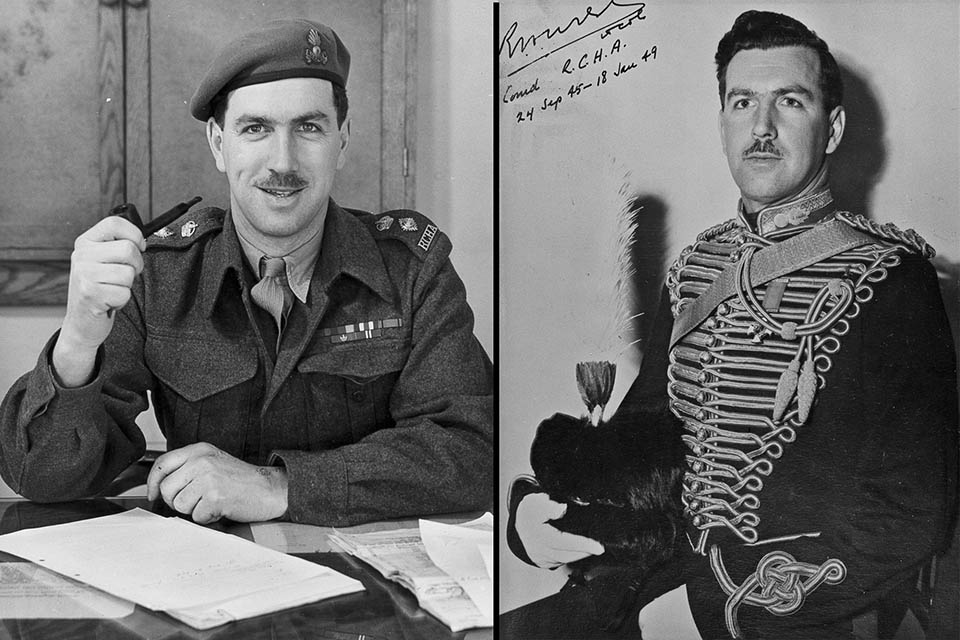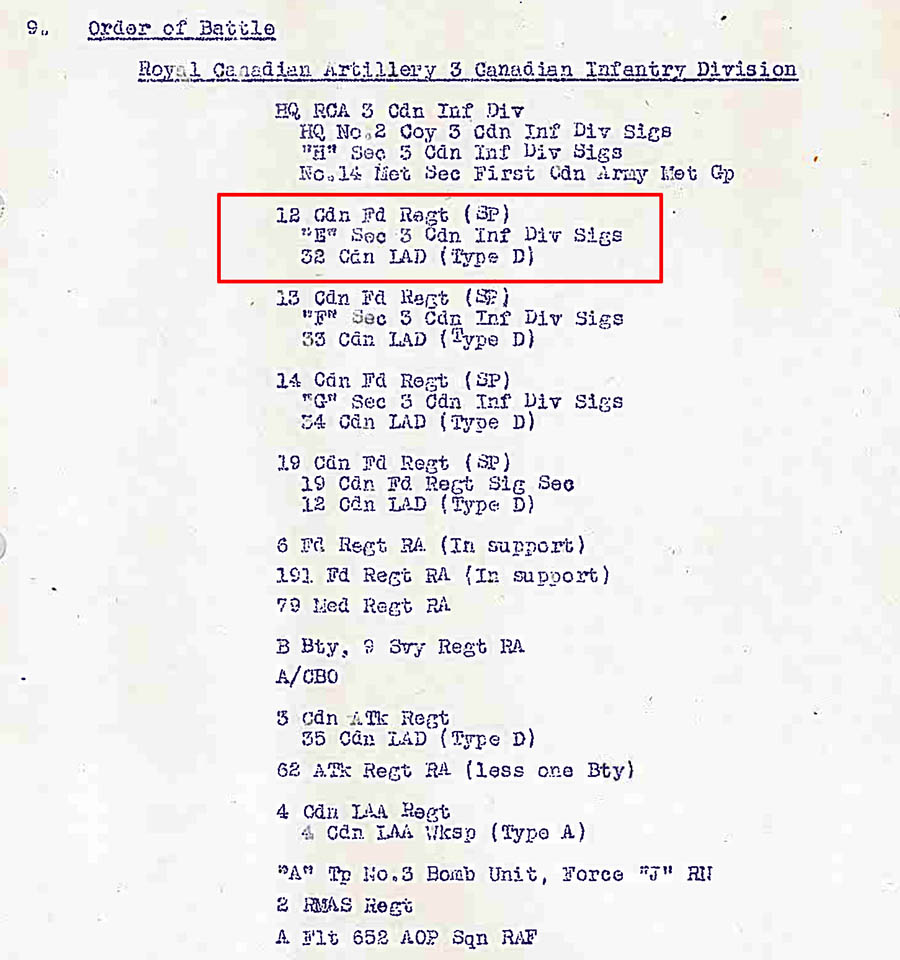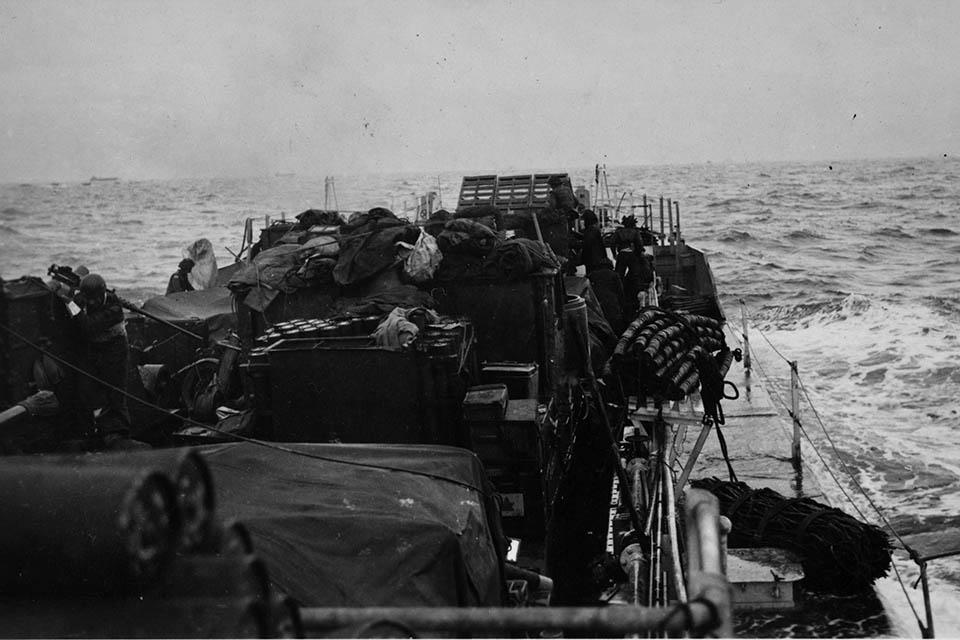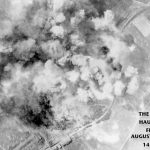A unique document just released as it describes what the 12th Canadian Field Artillery experienced during the first few days in Normandy, 1944.
The Artillery publication is posted on the Vancouver Gunners website, weekly news.

MEMORANDUM OF INTERVIEW WITH
Lt Col R H Webb, CO, 12 Cdn Fd Regt
23 June, 1944
Fd Arty in the Assault

1. 12 Fd Regt, RCA, was loaded into six LCTs with additional marching parties mingled with the res inf coys of the assault bdes, -R Wpg Rif, 1C Scot R, and HQ 7 Cdn Inf Bde. The Channel crossing was rough – so rough that everyone was surprised to hear that the op was under way.
2. During the run-in, Maj A G Goldie acted as Fwd Observer and directed the Regt’s fire onto the WEST end of COUSEULLES, where he reported it to be effective, with rounds falling in the target area. 120 rpg were fired and the results in COUSEULLES were clearly visible to the gnrs after landing.
3. The four observing offers and the recce parties had landed with their coys at approx H+15mins. Maj E Pickering, 2IC, Maj J. D Ross, OC 16 Bty, Capt G. M Wright and Lt Gothard were all wounded by MG or mortar fire shortly after reaching land.
4. Maj Goldie found the beach exits blown by the enemy and the low ground SOUTH of the dunes flooded and impassable. It appeared as if several hrs work were required before exits could be made ready. Meanwhile, the guns served no useful purpose lying offshore. It was therefore decided to bring the craft in to the beach and to put the guns in action at once. The scheduled time for landing was H+75 mins; the actual time was very close—about 0900 hrs. The tide by this time had covered the obstacles so that the LCTs had to find their way through them. In some instances vehs were forced to wade off into deep water. But all guns were ashore and providing arty sp to the advancing inf in a short space of time. To the confusion of men and vehs on the beach was added the roar of the guns, firing from the water’s edge, with RHQ behind them literally in the water. 12 Cdn Fd Regt was thus the first unit in the div to bring down arty fire from land. No guns were lost, but two vehs were drowned.
5. When the exits were opened the regt moved inland, one bty at a time so as to provide continuous sp, beyond the minefds to BANVILLE area, where it remained for the balance of D-day and the following night.
6. The next day, 7 Jun 44, as the inf of 7 Cdn Inf Bde advanced swiftly to the final objective, the regt was again stepped up, giving continuous sp, to the area near BRAY allotted to it. The gun area as originally planned would have been well protected had 9 Cdn Inf Bde been able to capture its objective. But as it was, for three days 12 Cdn Fd Regt had no inf on their front between themselves and the enemy. Beginning on 8 Jun 44 enemy tks and inf approached the gun posts from the SOUTH and SE, usually about dusk, and were engaged by SA fire and even arty firing over open sights. All such attempts by the enemy were broken up, and losses in dead and wounded inflicted on him. German PW remarked on the accuracy and effectiveness of the arty.
7. During the engagement at BUTOT EN BESSIN on 8 June 44, the regt lost three FOOs with the R Wpg Rif…(Capt A E Dobbs was killed, Capt F W Kraus was severely wounded, and Capt S A Gillies was wounded. Maj Goldie was captured by the enemy but escaped when our tks approached, and returned to his regt. A counterattack by 1 C Scot R, supported by arty fire, regained the ground lost in that battle.)
8. When it became apparent on 9 Jun 44 that 9 Cdn Inf Bde would not now proceed to its objective, the regt was withdrawn to the SECQUEVILLE area behind 7 Cdn Inf Bde. Here three posns were prepared (two being alternatives). All were dug in and wire was laid to all. Btys moved from one to another to deceive the enemy. The fact that the regt suffered no cas from counter-bty fire may be taken as proof of the effectiveness of the scheme.
9. Lt Col Webb expressed satisfaction with the performance of the 105 mm SP gun. A single round gives a greater “crump” than a 25-pdr. The eqpt itself offers better protection to the gnrs, and there is no need to dig in as deep as with tractor-drawn eqpts. One disadvantage, which has not been found troublesome, is that for large switches, the whole eqpt must be started up and slewed, a slower process than with the normal gun.
10. It had not been expected that four complete regts would still be firing the 105 mm. Eqpt cas were anticipated to be so hy that by now (23 Jun) it had been thought that at least one 25-pr regt would exist. But such had not been the case. 12 Cdn Fd Regt has had no gun cas, and there is no immediate prospect of any regt reverting to 25 pdrs.
(JRM/WB)

May 12th, 1945 ( see comment below for Canadian Army Newsreel link )
Colonel Roland H Webb appears in 73.6 “Germans Disarmed” with other members of the regiment: Maj. L.E. Kirkpatrick, and Capt. R.E. Aksin. They are accepting the surrender of the German U-boat on the island of Borkum.

























Just reviewing some old production notes for the Canadian Army Newsreel and (then Colonel) Roland Webb appears in 73.6 “Germans Disarmed” with other members of the regiment: Maj. L.E. Kirkpatrick, and Capt. R.E. Aksin. They are accepting the surrender of the German U-boat on the island of Borkum. Footage was taken by Sgt. Gordon Petty of the CFPU on 12 may 1945.You get a flash of him, tall and with his pipe.
https://youtu.be/0eJVxVNzkR8?list=PL04CC43B7CD63C686&t=492
Thank you for these well-documented notes! The screen image from your link may refer to your comment details.